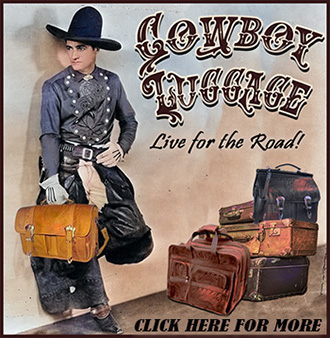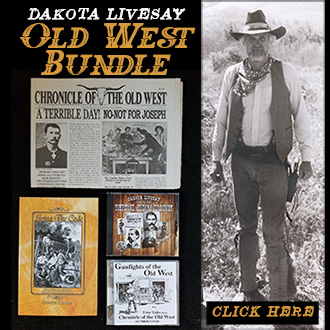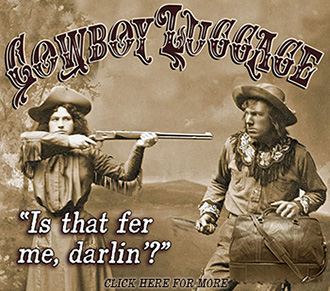 Chronicling the West For Harper’s. This fascinating book tells the story of two French artists, Paul Frenzeny and Jules Tavernier who were employed in 1873 by Harper’s Magazine to travel for one year across the great American frontier to chronicle immigrant migration. The men began in New York City and wound their way to San Francisco.
Chronicling the West For Harper’s. This fascinating book tells the story of two French artists, Paul Frenzeny and Jules Tavernier who were employed in 1873 by Harper’s Magazine to travel for one year across the great American frontier to chronicle immigrant migration. The men began in New York City and wound their way to San Francisco.
Paul Frenzeny was the son of a Hungarian nobleman. He had been a soldier in the French army, and eventually traveled to Mexico where he served as an artillery officer in the army of Maximilian. When Maximilian was defeated by the Juaristas, Frenzeny beat a hasty retreat back home to France by way of New York City. Here he became enamored with America and by using his considerable artistic talent and writing skills; he began working for Harper’s Magazine.
Jules Tavernier was the son of a British candy maker and grew up in France where he studied art with a Parisian master. After a stint in the military, he sailed for New York City were he immediately began building a reputation by producing expert artwork for important books and magazines, including Harper’s where he met Frenzeny.
When Harper’s cooked up the idea to publish realistic artwork showing immigrants crossing America, the magazine sent Frenzeny and Tavernier on a yearlong jaunt Out West. This book follows their trail from coast to coast as these two remarkable artists produced intricate drawings taken from their experiences as they traveled across the continent. Their sketches were transferred to wood cuts, and sent back to New York each week so readers could follow their adventures visually as well as in print. The result was a weekly flow of exceptional artwork combined with explanations of life on the frontier.
The men traveled by train, stagecoach and even horseback as they depicted life including glimpses of the manufacture of iron, and coal mining in Pennsylvania, plus train travel across Missouri, Kansas and Texas. There are log cabins, market days, sunsets, grazing cattle, homesteaders, woodcutters, Native Indians, prisoners en route to Ft. Smith, trader’s stores and even a vigilance committee preparing to hang outlaws for horse stealing.
Frenzeny and Tavernier worked relentlessly from place to place, following the immigrant trail, always looking for details surrounding everyday life. Their expert artistic talents picked up each and every nuance showing playful children, concerned mothers, thin over-worked animals, and dangers that lurked.
The book contains more than 130 marvelous illustrations along with the history lessons of author Claudine Chalmers whose keen eye directs readers’ attention to each important detail in the drawings. Chalmers has an uncanny way of observing what the artists must have seen as they watched argumentative washerwomen, snoozing pigs, defensive mother bears, dangerous river crossings, bustling cotton-gins, sugar-making in Texas, exciting deer hunts, market days and even abandoned towns after the railroads changed course. Coyotes digging through trash barrels and gnawing on dry bones in front of a dilapidated store tell the story. You’ll see prairie gnawing on dry bones in front of a dilapidated store tell the story. You’ll see prairie fires, buffalo slaughter, and Indian ceremonies. These wonderful illustrations include the Red Cloud Agency, work at a stone quarry, the emotions of a group of Mormon wives, and even the last of the Shoshone Indians begging at a railroad depot. The journey ends with scenes from San Francisco’s China Town.
This marvelous book combines history lessons from the 1870s era, along with exciting artwork you will marvel at time and again. It belongs as a special treasure in your Old West library. Get your copy HERE.
Editor’s Note: The reviewer Phyllis Morreale-de la Garza is the author of many books including Silk and Sagebrush; Women of the Old West, published by Silk Label Books, P. 0. Box 700, Unionville, New York 10988-0700 www.siIklabelbooks.com
*Courtesy of Chronicle of the Old West newspaper, for more click HERE.

 Following George Custer’s defeat at the Little Big Horn the military was looking for a bright spot. That bright spot was the lone survivor on the battlefield, Comanche. Now, I said Comanche, not a Comanche. For Comanche was the name of Captain Myles Keogh’s horse. Let me explain.
Following George Custer’s defeat at the Little Big Horn the military was looking for a bright spot. That bright spot was the lone survivor on the battlefield, Comanche. Now, I said Comanche, not a Comanche. For Comanche was the name of Captain Myles Keogh’s horse. Let me explain.

 The incident, and Billy Thompson’s escape so infuriated the Mayor that he fired the entire police force. Since, at that time, Ed Crawford wasn’t on the force, the mayor hired him as a replacement. Because the Thompsons were Texans, and Texans were notorious for causing problems, there were hard feelings against any Texan in town. There was even talk about forming a vigilante group. One of the people supposedly on the vigilante’s list was a Cad Pierce.
The incident, and Billy Thompson’s escape so infuriated the Mayor that he fired the entire police force. Since, at that time, Ed Crawford wasn’t on the force, the mayor hired him as a replacement. Because the Thompsons were Texans, and Texans were notorious for causing problems, there were hard feelings against any Texan in town. There was even talk about forming a vigilante group. One of the people supposedly on the vigilante’s list was a Cad Pierce. Chronicling the West For Harper’s. This fascinating book tells the story of two French artists, Paul Frenzeny and Jules Tavernier who were employed in 1873 by Harper’s Magazine to travel for one year across the great American frontier to chronicle immigrant migration. The men began in New York City and wound their way to San Francisco.
Chronicling the West For Harper’s. This fascinating book tells the story of two French artists, Paul Frenzeny and Jules Tavernier who were employed in 1873 by Harper’s Magazine to travel for one year across the great American frontier to chronicle immigrant migration. The men began in New York City and wound their way to San Francisco.



